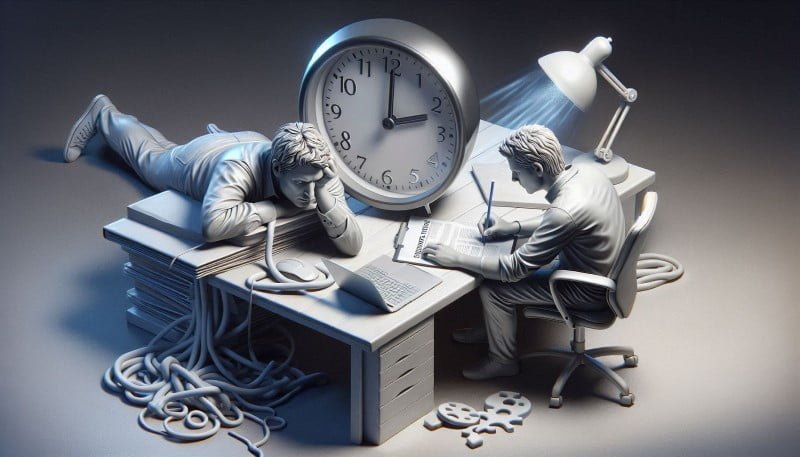
Ever felt guilty about putting off that big project? Well, what if I told you that procrastination isn’t always bad? Welcome to the world of productive procrastination – it’s like procrastination’s cooler, more useful cousin.
So, what’s the deal with productive procrastination?
First off, let’s clear the air. We’re not talking about binge-watching Netflix when you should be working. Productive procrastination is all about strategically delaying one task to work on something else that’s still meaningful. It’s like giving your brain a chance to work on problems in the background while you’re busy with other stuff.
Here’s the cool part: your brain actually loves this. It’s always looking for new things to explore, and sometimes it needs a break from the tough stuff. By switching gears, you’re not just avoiding work – you’re giving your mind the space it needs to come up with brilliant ideas.
Think about it this way: have you ever been stuck on a problem, taken a break to do something else, and then suddenly had an “aha!” moment? That’s productive procrastination in action!
Some pretty impressive folks have used this technique. Leonardo da Vinci was famous for jumping between projects, and look at the masterpieces he created. Charles Darwin spent years mulling over his ideas before publishing his groundbreaking work on evolution. These guys knew that sometimes, taking your time can lead to better results.
How can you make productive procrastination work for you?
Try time-blocking: Set specific times for different tasks. This way, you’re not just procrastinating willy-nilly – you’re giving yourself structured breaks.
Give the Pomodoro Technique a shot: Work for 25 minutes, then take a 5-minute break. After four rounds, take a longer break. It’s like interval training for your brain!
Set micro-deadlines: Break big projects into smaller tasks with their own deadlines. It makes things feel less overwhelming and more doable.
Prioritize like a pro: Figure out what’s really important and focus on that. The Eisenhower Matrix can help you sort out what’s urgent and what’s important.
Use tech to your advantage: There are tons of apps out there to help you stay on track. Trello and Asana are great for organizing tasks, while Forest and Focus at will can help you stay focused.

Finding the right balance
Now, here’s the tricky part – you’ve got to find the sweet spot between procrastination and productivity. Too much procrastination, and you’ll miss deadlines and stress yourself out. Not enough, and you might burn out.
The key is to stay motivated. Set clear, achievable goals and break them down into manageable chunks. Remember to take regular breaks to avoid burnout – your brain needs rest too!
Creating the right environment is crucial. Keep your workspace organized and free from distractions. And don’t forget to set boundaries between work and leisure time – it’s all about balance.
Real-life examples of productive procrastination
Let’s look at how some folks are making this work:
- Dr. Jane Morris, a psychology professor, starts her day with simple tasks like emails before diving into complex data analysis. It’s like a warm-up for her brain!
- John Anderson, a project manager, takes breaks for creative brainstorming when he’s feeling overwhelmed. This often leads to innovative solutions for his projects.
- Novelist Emma Blake goes for walks or sketches when she’s facing writer’s block. These activities help her process her thoughts and lead to writing breakthroughs.
- Sarah, a freelance designer, takes short breaks for household chores during her workday. It gives her a sense of accomplishment and helps her refocus on her design work.
Want to give it a try? Start by identifying some low-priority tasks that could serve as mental breaks. Use these moments to recharge, and see how it impacts your productivity and well-being.
Remember, productive procrastination isn’t about avoiding work – it’s about working smarter. By giving your brain the space it needs, you might just find yourself coming up with better ideas and feeling less stressed. So go ahead, procrastinate productively – your future self might thank you for it!


